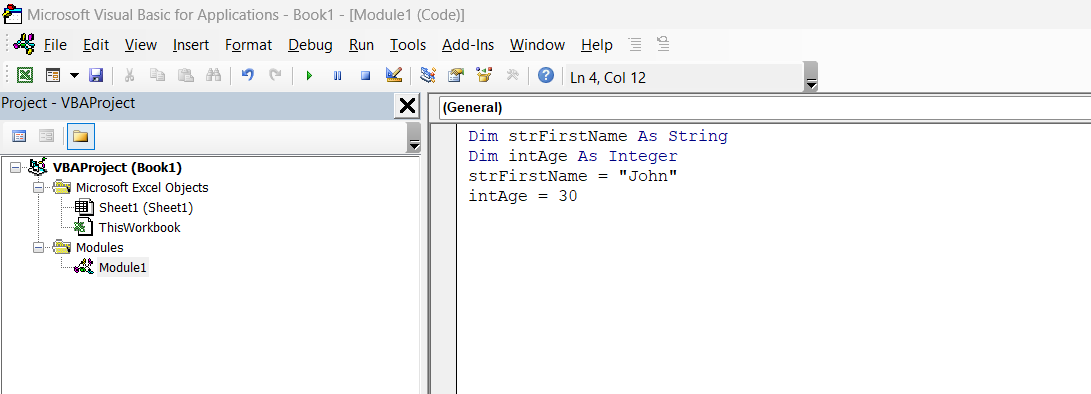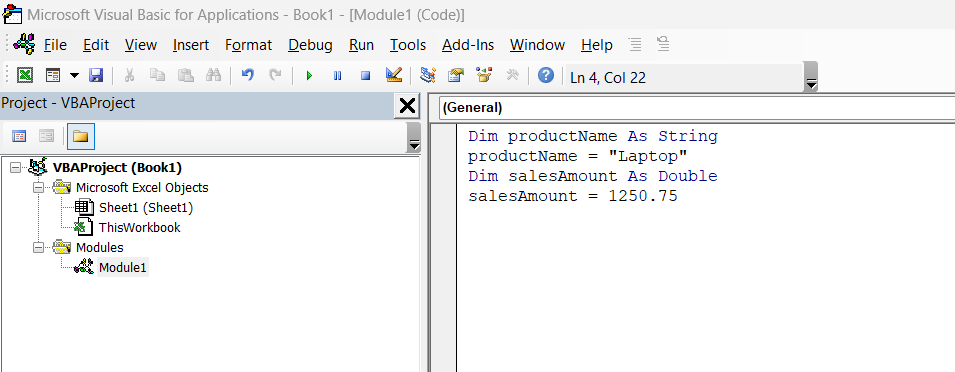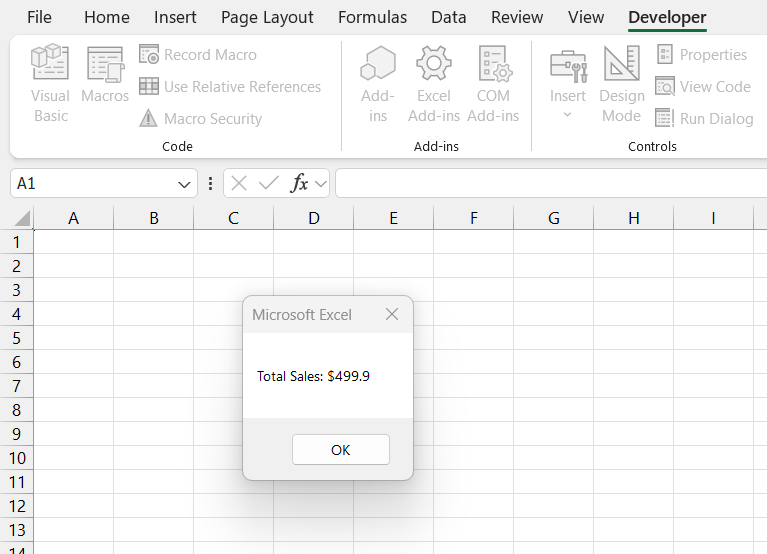When working with VBA (Visual Basic for Applications) in Excel, I often find that understanding variables is crucial for writing efficient and dynamic code. Variables allow me to store and manipulate data within my macros, making my automation tasks much more flexible and powerful. In this article, I’ll walk you through the essentials of VBA variable, their types, declaration, and best practices.
Key Takeaways:
- VBA variables store and manage data efficiently, making macros more dynamic and flexible.
- Declaring variables using the Dim statement improves memory optimization and prevents errors.
- Choosing the right data type, such as Integer, Double, or String, enhances code accuracy and performance.
- Assigning values to variables and using them in procedures simplifies calculations and automates tasks.
- Best practices like using descriptive names, Option Explicit, and limiting scope improve code readability and efficiency.
Table of Contents
Introduction to VBA Variables in Excel
What Are VBA Variables?
A variable in VBA is a named storage location in memory that holds a value that can change while the macro is running. Instead of hardcoding values, I use variables to store numbers, text, dates, or even objects, making my code adaptable.
Declaring Variables in VBA
Before using a variable, I always declare it using the Dim statement. Declaring variables helps in memory optimization and prevents unexpected errors. The basic syntax looks like this:
Dim variableName As DataType
For example:
Dim totalSales As Double Dim customerName As String Dim orderDate As Date
Understanding the Basics of VBA Variables
Defining Variables and Their Importance in VBA
In the realm of VBA, defining variables is akin to assigning name tags to storage boxes where you intend to keep specific types of data during a macro’s execution. This act is critical because it allows me to reference and manipulate these data points effortlessly as the macro runs, rather than clumsily searching through cells on a worksheet.
Variables play an instrumental role in making the code more readable and efficient. Instead of hard-coding values that change dynamically, by using variables, I can write flexible codes that adapt to varying data without the need for modification. Furthermore, variables reduce errors and enhance the debugging process—when an error arises, it’s much simpler to pinpoint and correct a value in a variable than to hunt through numerous cells. They also contribute to the speed of the macros, for variables in memory are accessed significantly faster than worksheet cells, leading to quicker execution times.
Overall, defining variables effectively means crafting a cleaner, more maintainable, and optimized VBA script. It’s a foundational skill that significantly boosts the power and performance of Excel automation projects.
Common Types of VBA Variables You Should Know
As I navigate through the variables in VBA, it’s important to note that the types chosen have a direct impact on the efficiency and accuracy of the code. Here are some common VBA variables that I find indispensable, especially in financial modeling and analysis:
- Integer: This variable is my go-to when I need to store whole numbers. Given its lack of decimal places, it’s ideal for counting, iteration in loops, and indexing arrays in scenarios where precision is not decimal-dependent.
- Single: The Single data type comes in handy when handling fractional numbers without needing the larger range that a Double provides. It’s a pragmatic choice for calculations where moderate precision is acceptable.
- Double: When dealing with financial calculations that require high precision—especially over larger numeric ranges—I opt for Double variables. Its increased storage capacity ensures accuracy where it’s paramount.
- Date: To manage dates efficiently within my macros, the Date variable is invaluable. It allows me to store and manipulate calendar dates, making it possible to perform date calculations and control time-driven events.
- String: Text manipulation is another common task in automation, and the String data type is perfectly suited for this. Whether storing names, addresses, or any other textual data, a String variable treats all input as text, enabling robust text processing capabilities.
- Boolean: Simplicity is the hallmark of the Boolean data type, which stores True or False values. It’s particularly useful in controlling the flow of the program with conditional logic.
Understanding when and why to use each of these variables is crucial for creating efficient and effective VBA scripts. Having this knowledge at my fingertips allows for smarter data management and ultimately contributes to smoother and faster macro execution.
The Art of Declaring Variables in VBA
Step-by-Step Process of Variable Declaration Using Dim
Declaring variables in VBA is a straightforward process that follows a few simple steps. Here’s how I typically define variables using the Dim statement:
- Identify the Variable: I start by choosing a meaningful name for the variable that reflects its purpose within the code. Consistent and descriptive naming helps with readability and maintenance.
- Choose the Scope: Then, I decide whether the variable needs to be accessible only within a particular subroutine (procedure-level) or throughout the entire module (module-level).
- Use the Dim Statement: To declare the variable, I use the Dim statement, followed by the variable name. The basic format looks like this:
Dim VariableName As DataType. - Specify the Data Type: After the variable name, I include the
Askeyword followed by the desired data type, such as Integer, String, or Double. Specifying the data type is crucial because it determines the kind of data the variable can hold and how much memory it will use. - Initialize the Variable (Optional): Although not mandatory at declaration, I often initialize variables with a default value to ensure there’s no undefined or unexpected behavior during the code execution.
Here’s an example:
Dim strFirstName As String Dim intAge As Integer strFirstName = "John" intAge = 30
In the example above, I’ve declared two variables—strFirstName and intAge—with data types String and Integer, respectively, and then initialized them with appropriate values. This process ensures that VBA allocates the right amount of memory and treats the data within the variables accordingly throughout the macro’s runtime.
Working with VBA Variable
Assigning Values to Variables
Once declared, I assign values to variables using the equal sign (=):
Dim productName As String productName = "Laptop" Dim salesAmount As Double salesAmount = 1250.75
Using Variables in VBA Procedures
To demonstrate how I use variables, consider a simple macro that calculates total sales:
Sub CalculateTotal() Dim unitPrice As Double Dim quantity As Integer Dim total As Double unitPrice = 49.99 quantity = 10 total = unitPrice * quantity MsgBox "Total Sales: $" & total End Sub
When I run this macro, it displays a message box showing the total sales amount.
Best Practices for Using Variables
To keep my VBA code efficient and readable, I follow these best practices:
- Use Descriptive Names: Instead of
xory, I use meaningful names liketotalCostorcustomerID. - Declare Data Types: Explicitly declaring types prevents errors and improves performance.
- Use Option Explicit: I include
Option Explicitat the top of my module to force variable declaration, reducing typos and undeclared variable issues. - Limit Scope: I define variables at the lowest necessary scope to avoid conflicts and save memory.
- Initialize Variables Properly: Ensuring variables have meaningful default values helps prevent unexpected results.
FAQ: Essential Questions Answered
What are the VBA Variables in Excel?
Variables in VBA are named storage locations in my computer’s memory that I can use to hold data. They enable macros to be more dynamic and flexible by allowing me to store and manipulate values during runtime without having to write or rewrite data in the cells of an Excel worksheet. Each variable has a specific data type that defines the kind of data it can hold—such as numbers, text, or dates—and their use is critical for creating efficient, readable, and powerful Excel macros.
How Do I Store a Value in a Variable?
To store a value in a VBA variable, first declare the variable with a specific data type using the Dim statement, then assign a value using the assignment operator (=). For example, Dim x As Integer declares a variable named x as an integer type. To store a value, say 10, I would simply write x = 10. If it’s a string variable, encapsulate the value in quotation marks, like this: Dim y As String followed by y = "Hello".
What is the Difference Between Static and Dim Statements?
The key difference between Static and Dim statements in VBA is that variables declared with Static will retain their values between calls to the procedure, while those declared with Dim will not. If I declare a variable using Dim inside a procedure, its value will be reset every time the procedure is called. However, by using Static, I can ensure the variable retains its value, even after the procedure has ended, until the workbook is closed or the macro stops running.
Can You Declare a Variable Anywhere in a Macro?
Generally, I declare variables at the beginning of subroutines or functions for clarity and good coding practice. However, VBA does allow me to declare variables anywhere in a macro using the Dim statement. The scope and lifetime of the variable will depend on where it’s declared—whether it’s within a procedure (local scope) or at the module level (module-level scope). But to maintain readability and structure, it’s recommended to declare them at the start.
What Are the Most Popular Misconceptions About VBA Variables?
One common misconception is that VBA variables are difficult to manage compared to their worksheet cell counterparts, when in fact, variables offer a more streamlined and efficient way to store data for macros. Another is that all variables are the same, but different data types exist for specific needs, affecting performance and storage. Some also mistakenly believe that using many variables will slow down a macro, while in reality, using variables properly can significantly speed it up by avoiding repeated worksheet interactions. Lastly, there’s a notion that variable declarations are optional, while using Option Explicit to require declarations is a best practice to avoid errors and enhance code integrity.
John Michaloudis is a former accountant and finance analyst at General Electric, a Microsoft MVP since 2020, an Amazon #1 bestselling author of 4 Microsoft Excel books and teacher of Microsoft Excel & Office over at his flagship MyExcelOnline Academy Online Course.












